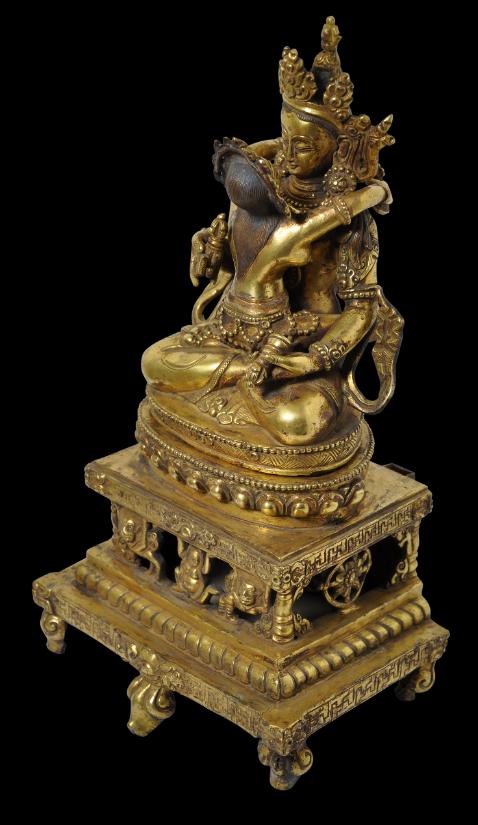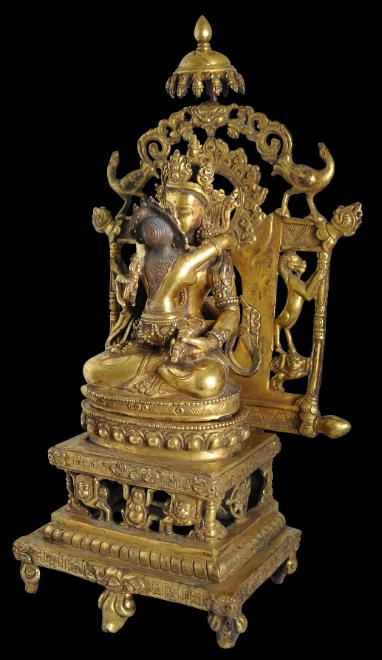
Tibetan Gilded Vajrasattva Yab-Yum
Gilded Bronze Image of Vajrasattva & Consort
Tibet
19th century
height: 44cm, width: 26cm
This large bronze image of Vajrasattva in yab-yum, made in the Pala revival style of the 18th-19th century, is unusual for its completeness – it comprises the central figure of Vajrasattva and his consort, a lotus platform on which they sit, a throne, an aureole, and an umbrella canopy. All these elements are decorated with particularly good mercury fire gilding.
The central figure, the throne, the aureole, and the umbrella are all separate elements, cast separately, and which fit together.
Vajrasattva carries a
vajra in the right hand and a bell (ghanta) in the left which rests against his left thigh – this being the typical and identifying attributes for this deity. He has a high, pointy crown, and tassels of black hair (with remnants of Reckitts Blue highlighting) that fall over the shoulders. The consort has similar hair and jewels that match those of Vajrasattva.
The throne has an open base; the pierced sides decorated with Himalayan snow lions and other motifs. The square edges are engraved with reverse swastika symbols. It sits on five solid-cast scrolling feet. The bottom of the throne has an un-gilded copper plate engraved with a stylised double-vajra motif. The interior contains small slips of paper which appear to be marked with script or talismanic symbols.
The aureole or backing plate also is pierced and decorated with Himalayan lions and geese. The apex is cast with a
chhepu face motif, just beneath the umbrella canopy.
Vajrasattva is the sixth Dhyani Buddha and is usually found in independent shrines rather than in stupas. Worship of this deity is usually done in private and is not open to those not initiated into the ways of the Vajrayana. He is represented either in single form or in
yab-yum as is the case here. Vajrasattva sits in a cross-legged, meditative pose like other Dhyani Buddhas.
Most likely, the image has been cast by Newar craftsmen for the Tibet market. It is in fine condition, is without losses, and has a strong, sculptural presence, and fine patina.
References
Lipton, B., & N.D. Ragnubs, Treasures of Tibetan Art: Collections of the Jacques Marchais Museum of Tibetan Art, Oxford University Press, 1996.
Sakya, Jnan Bahadur,
Short Description of Gods, Goddesses and Ritual Objects of Buddhism and Hinduism in Nepal, Handicraft Association of Nepal, 2000.
Provenance
UK art market
Inventory no.: 2595
SOLD













